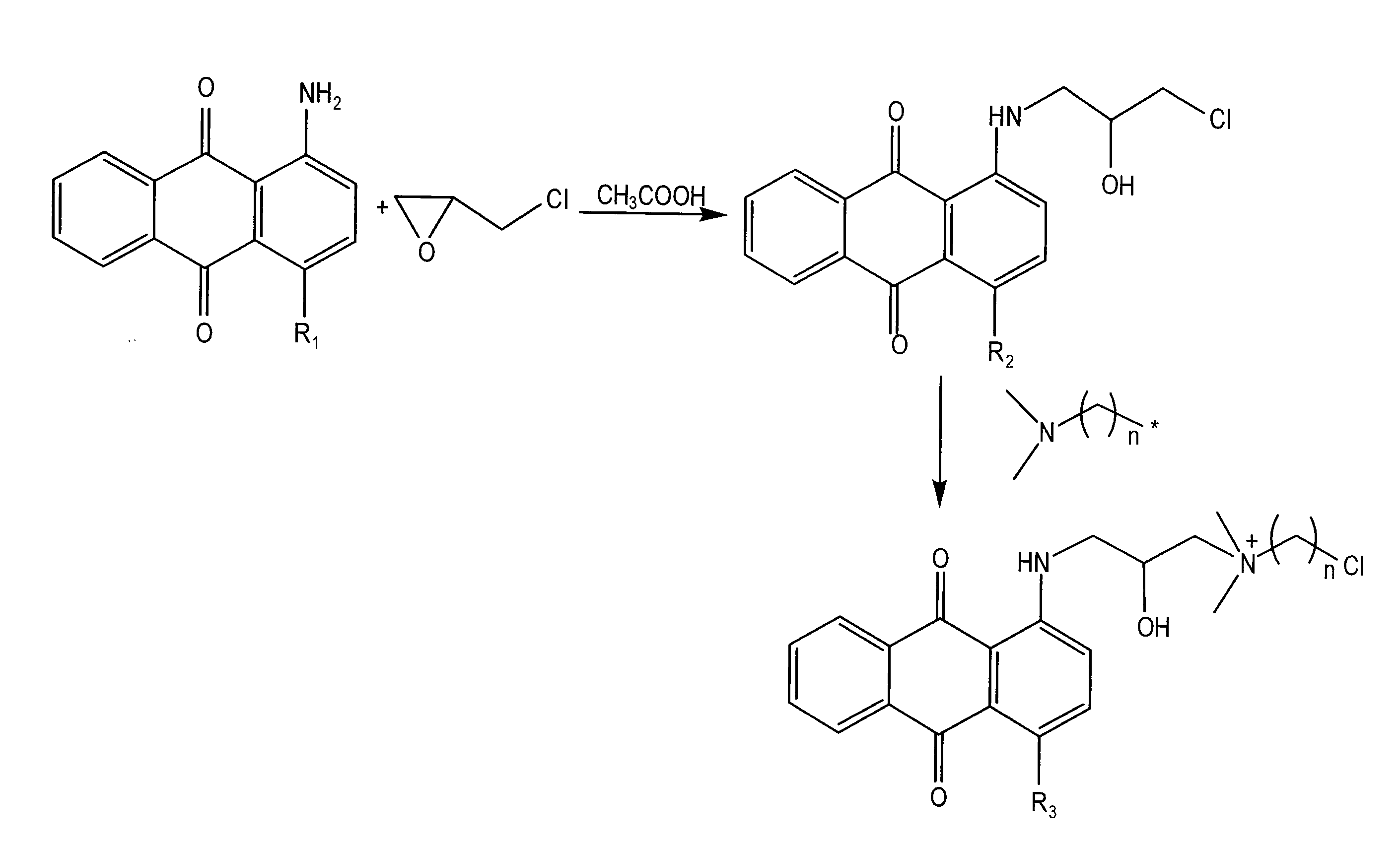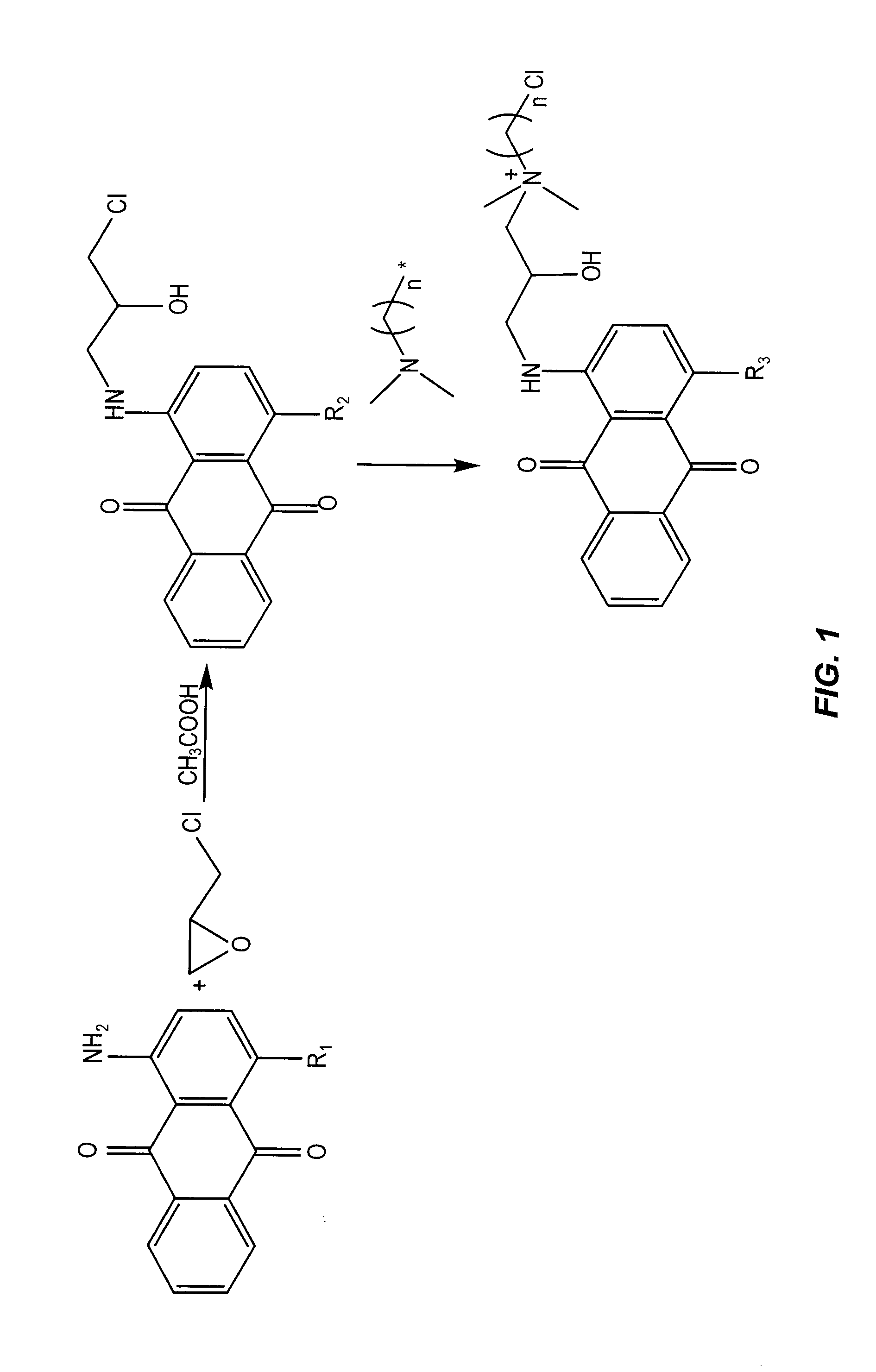Antimicrobial colorants
a technology of antimicrobial colorants and colorants, applied in the direction of liquid repellent fibres, anthracene dyes, dyeing processes, etc., to achieve the effect of preventing any contamination
- Summary
- Abstract
- Description
- Claims
- Application Information
AI Technical Summary
Benefits of technology
Problems solved by technology
Method used
Image
Examples
Embodiment Construction
I. Definitions
[0057]The term “alkyl” includes a saturated linear monovalent hydrocarbon radical or a saturated branched monovalent hydrocarbon radical containing from 1 to 20 carbon atoms. Preferably, the alkyl radical contains from 1 to 4 carbon atoms (i.e., C 1-C4 alkyl) or from 4 to 18 carbons atoms (i. e., C4-C18 alkyl). Exemplary alkyl groups include, but are not limited to, methyl, ethyl, n-propyl, 2-propyl, butyl, iso-butyl, sec-butyl, tert-butyl, pentyl, iso-amyl, hexyl, heptyl, octyl, nonyl, decyl, undecyl, dodecyl, and the like.
[0058]The term “alkylene” includes a saturated linear divalent hydrocarbon radical or a saturated branched divalent hydrocarbon radical containing from 1 to 20 carbon atoms. Preferably, the alkylene radical contains from 1 to 12 carbon atoms (i.e., C1-C12 alkylene). Exemplary alkylene groups include, but are not limited to, methylene, ethylene, propylene, butylene, pentylene, hexylene, heptylene, octylene, nonylene, decylene, undecylene, dodecylene,...
PUM
| Property | Measurement | Unit |
|---|---|---|
| Fraction | aaaaa | aaaaa |
| Fraction | aaaaa | aaaaa |
| Time | aaaaa | aaaaa |
Abstract
Description
Claims
Application Information
 Login to View More
Login to View More - R&D
- Intellectual Property
- Life Sciences
- Materials
- Tech Scout
- Unparalleled Data Quality
- Higher Quality Content
- 60% Fewer Hallucinations
Browse by: Latest US Patents, China's latest patents, Technical Efficacy Thesaurus, Application Domain, Technology Topic, Popular Technical Reports.
© 2025 PatSnap. All rights reserved.Legal|Privacy policy|Modern Slavery Act Transparency Statement|Sitemap|About US| Contact US: help@patsnap.com



